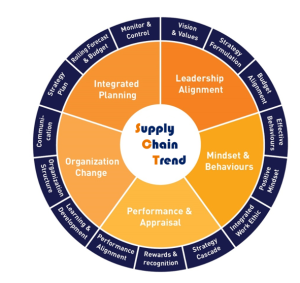How to measure your strategy execution readiness
Your company has a strategy. Are you confident it is ready to be deployed and executed? Most likely not, as 60%-90% of strategy implementations fail and only 14% of executives are satisfied with the execution of a strategy. This post introduces a framework to assess your company’s strategy execution readiness, in order to align leaders around how to bridge your strategy to execution gaps. I also provide a free strategy execution checklist to assess your readiness.
Before a strategy can be deployed and executed effectively, you need to have leadership alignment around execution readiness. Your leadership team has to ask themselves at least the following questions:
- Do we have the best possible circumstances to execute our strategy?
- If not, what are the gaps to effectively execute our strategy?
- Are we aligned around our strategy execution gaps and strengths?
- How and when are we going to address our gaps?
Answers to these questions will provide understanding between your leaders on how they perceive the risk profile of executing the strategy. It will give your leadership team insight if they feel ready to execute their strategy. But most importantly, it will create alignment on how your company can create the best possible circumstances to execute the strategy successfully.
More organizations than ever before are struggling to close the strategy and execution air gap. What does this look like in real terms? Click here to find out with this ROI of Strategy Execution infographic.
To help executives understand their gaps to effective Strategy Execution, I researched 7 strategy implementation frameworks and 75 leading strategy execution articles published over the last 30 years. I looked for the most common strategy execution factors, and distilled and grouped 5 key success factors.
I developed a 40 question checklist to assess business confidence across the 5 strategy execution key success factors. If you take this survey with your leadership team, it provides you answers to powerful questions like:
- What are our perceived Strategy Execution gaps?
- What are our perceived Strategy Execution strengths?
- Are we aligned around Strategy Execution readiness?
What follows is a brief description of these 5 ultimate Strategy Execution success factors.
Leadership alignment:
There is collective leadership and common language around purpose, vision, behaviours, strategic capabilities, balanced scorecard and budget objectives. This supports focused decision making, resource allocation, and issue resolution.
60% of organizations do not have strategic initiatives in the budget
Mindset and behaviours
A resilient, positive and growth mindset culture, with effective behaviours and group dynamics supports alignment, integration and strategy execution. These cultures are proven to outperform negative, fearful cultures with aggressive behaviours. People & Culture get a mention in 6 from 7 researched strategy frameworks, however:
30% of managers mention cross unit working as the greatest challenge to strategy execution
Performance and appraisal
The strategy is cascaded to individual performance level. Objectives, rewards, and consequences are clear and include the ‘What’ as well as the ‘How’ we do it. Recruitment policies are aligned with values and behaviours and there is action towards performance issues. Reward systems are mentioned in 6 out of 7 researched strategy frameworks, however:
70% of middle management and 90% of front-line employees incentives is not linked to strategy
Organization change
The organizational structure supports the strategy. There is strategic capability building, clear roles and responsibilities and continuous formal, informal and two-way strategy communication to engage employees. Organizational structure is mentioned in 7 out of 7 researched strategy frameworks, however:
In 38% of companies, managers do not inform their team about the chosen strategic direction
Integrated planning & monitoring
There is a strategy implementation plan. A periodic rolling forecast provides visibility in gaps to budget and supports enterprise resource re-allocation. Strategic initiatives, goals, measurements, and targets are periodically monitored. Control, process, information systems, and goals are mentioned in 5 out of 7 researched strategy frameworks, however:
92% of companies do not report on strategic lead performance indicators
If you and your leadership team ask yourselves the right questions around these five key strategy execution themes, you will create understanding around your strategy to execution gaps. You will start a conversation together about your strategy execution readiness. You will hold up a mirror and ask; Are we ready to execute?
Download the strategy execution survey
Success with aligning your leadership team around strategy execution.
Download File

Thanks for sharing this Niels. Alignment is so critical to strategy execution and realization of the objectives and is so often overlooked, misunderstood or just simply lack of experience of how to align. This article does a great job at getting the point across succinctly and the free Strategy Execution checklist you offer is an excellent and value add resource. Thank you.
Hi Niels Van Hove. Very good article thanks. It certainly opens a window to explore. Nevertheless where do you include the lack of Organization Culture, Processes and Structure’s Readiness and lack of Change Governance and Stakeholder Management two critical issues to be addressed to ensure sustainable Strategy deployment?
I am interested
Fantastic article. Yes, strategies designed and discussed in Board Rooms often fail, as the team that strategies and decides often fail to look beyond and take execution team into confidence before going ahead. There would be gaps, which would not be acknowledged and if the time to rectify is very little or none, its bound to fail. Alignment to the goal by different teams is as critical or perhaps more than the strategy itself. Thank you Niels Van Hove.
Good article to raise the points in how to implement the Strategy effectively. Besides, the right team/person in charge of strategy making is the key thing to a right strategy that is a on-ground direction and achievable through efforts and time to be invested.
Brilliant thoughts … can you give a framework around it as well?